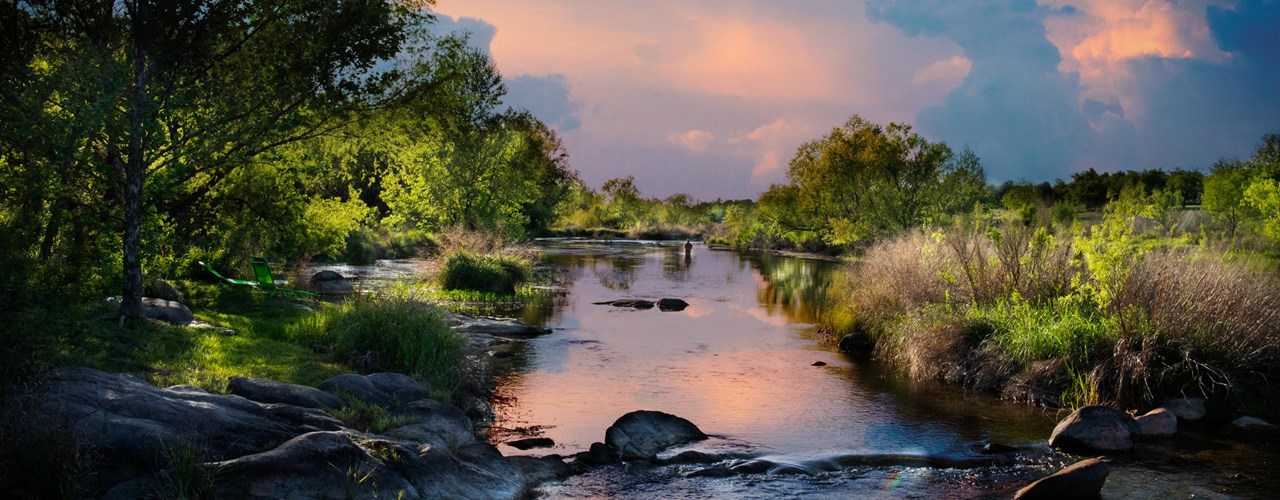Texas Hill Country Conservation Network: Unleashing the Power of Connections and Community
Unleashing the Power of Connections and Community by Rachael Lindsey, Director of Science and Stewardship, Hill Country Conservancy
DRIPPING SPRINGS, Texas – "Ecosystems are so similar to human societies - they're built on relationships. The stronger those are, the more resilient the system." – Suzanne Simard
The recently released Land, Water, Sky, and Natural Infrastructure Plan expands our perspective of Hill Country infrastructure beyond the concrete and steel that physically supports our cities and society. This plan provides us with a framework for conversations in our communities to value natural infrastructure in the same way we value built infrastructure – as critical and tangible systems necessary for our way of life and worthy of major investments. The principles of a healthy functioning ecosystem – diversity, connection, communication, collaboration – are also the foundations of a healthy and optimized human community. By recognizing the interdependence of human well-being and ecological health, we empower communities to collaborate, envision, and ensure a protected and connected Hill Country ecosystem for current and future generations.
Our region’s natural infrastructure starts with our beloved rivers and streams. These waterways provide us with drinking water, irrigation for agriculture, aquatic biodiversity, and opportunities for recreation like fishing, boating, and swimming. These rivers and streams are fed by vast unseen aquifers and caves - underground reservoirs that supply clean water to both wells and springs.
When rain falls in the Hill Country it is absorbed by a dense carpet of diverse vegetation, which acts as a sponge, gradually infiltrating rainwater through deep limestone filters to collect in the aquifers below. This invaluable naturally occurring infrastructure mitigates both flooding and drought and supports human needs and the local environment.
Each of these pieces – streams, aquifers, terrain, vegetation – is critical to the function of the whole ecosystem. The interdependence of these individual parts optimizes the system we enjoy and need to survive.
Our vibrant Hill Country environment does not exist in a vacuum - we play a role as part of the ecosystem community, actively shaping both its present and future. We are life, too. While modern society is often seen as separate from natural systems, this perception isolates us and often disrupts healthy natural systems through pollution, degradation, and fragmentation. Humans existed in alignment with our ecosystems for millennia – it is only recently that we have created barriers to our own role as a critical part of a functioning environment. To create a flourishing future civilization, we must embrace our own indigeneity to the ecosystems that sustain us. We must emulate their model of cooperation and interconnectedness within our human systems.
This optimization of natural infrastructure and human systems relies on the collaboration and partnership of diverse stakeholders. Governments, communities, scientists, businesses, and peoples must come together, recognizing that their collective wisdom and expertise are essential for effective management strategies, policies, and initiatives. Suzanne Simard’s groundbreaking work revealed the intricate network of mycorrhizal fungi that connect trees underground, facilitating nutrient exchange and communication among diverse species and locations. Similarly, we should connect and share knowledge to make holistic decisions, integrate local wisdom and scientific expertise, and ensure that no perspective is left unheard or undervalued.
In addition to sharing technical resources, the Land, Water, Sky, and Natural Infrastructure Plan is an early step towards ensuring conservation efforts do not benefit some, while excluding others. Historically marginalized communities often bear the brunt of environmental degradation and lack opportunities to benefit from natural resources while at the same time being left out of the decision-making process. We know conservation strategies are most effective when they are informed and implemented by the full range of perspectives and experiences. A diverse group of stakeholders brings different ideas, values, and priorities to the table, leading to more innovative and comprehensive solutions. Inclusive decision-making also fosters community ownership and support for conservation initiatives, making them more likely to succeed in the long term. By seeking out diverse voices, fostering inclusive opportunities, and developing equitable solutions, we can dismantle systemic barriers and empower communities to collaborate in decision-making processes and ensure collective ownership and stewardship of our environment.
Maximizing the potential of natural infrastructure requires embracing connections and community. By fostering collaboration, inclusivity, and empowerment, we create a human infrastructure of diverse stakeholders working together to ensure the sustainable protection and management of our ecosystems. This approach not only optimizes the functionality and resilience of natural infrastructure, but also addresses historical inequities and promotes social cohesion. Recognizing, celebrating, and building off of the incredible diversity of our human and environmental systems paves the way for a sustainable, equitable, and prosperous future for all. It is our collective responsibility to build a resilient and inclusive world that honors and nurtures the interconnectedness of nature and humanity.
This is our Hill Country call to action: let’s open conversations on natural infrastructure in our local communities, connect with others across our landscape, envision protection of these natural resources we depend on, and empower all humans to be essential to the maximization of healthy and functioning ecology in our region.
Photo Credit
Evening on the Llano - Courtesy of Ray Uherek (2018), Hill Country Alliance



